Have you just started experimenting with the Gedmatch X One-to-One tool? The results can sometimes be confusing! What does it mean to share X DNA with someone, and what does it mean when you don't? In this post, I'll help you understand your Gedmatch X One-to-One Results so you can add a full understanding of X DNA to your genealogy toolbox.
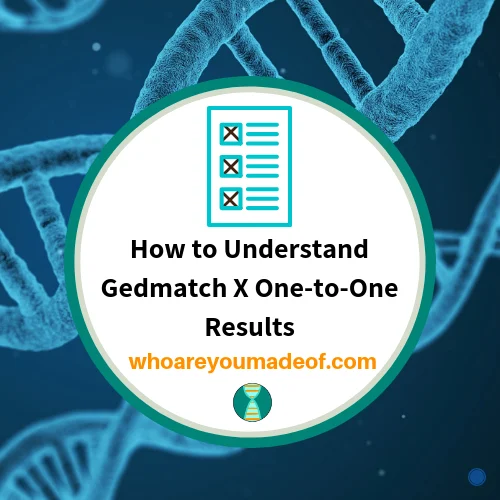
You'll learn:
- How to understand your Gedmatch X One-to-One Results
- What it means to share X DNA with someone
- What it means if you share no X DNA with a DNA match
- How to use X DNA in combination with autosomal DNA results (i.e. "regular" shared DNA information)
How to understand your Gedmatch X One-to-One Results
The Gedmatch X DNA One-to-One comparison results are a little different than the One-to-One autosomal DNA comparison tool results. They look similar, but shared X DNA is very different than shared autosomal DNA (from your numbered chromosomes).
Below, you can see any example of shared X DNA between me and one of my DNA matches. Below the image, I will dissect the results and explain all of the aspects of the X DNA comparison results to you:
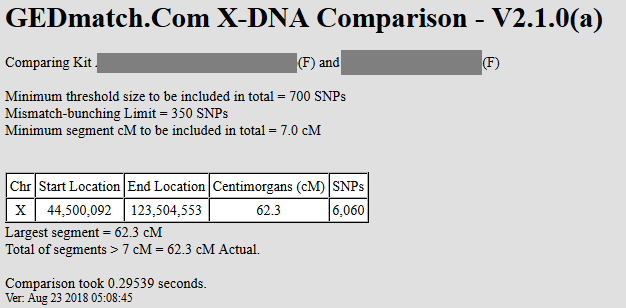
- Chr: This is the chromosome that the tool is using for the comparison. Of course, in this case it is the X chromosome.
- Start Location: This is the beginning location on the X chromosome where the matching segment begins. It's possible to have more than one matching segment, so this information can occasionally be useful (especially for males, who only have one copy of the X chromosome)
- End Location: This is the end location on the X chromosome where the matching location ends.
- Centimorgans (CM): This is the size, or genetic length, of the matching segment. Just as in shared DNA segments on other chromosomes, the length of this segment can provide clues as to how far back the common ancestor might be. It's not foolproof, but it's valuable information.
- SNPs: This is how many Single Nucleotide Polymorphisms were tested to find this matching segment. Generally speaking, the higher the number, the better. A low number of SNPs can mean a false match.
As you might notice, there is no statement estimating generations to common ancestor. It's basically impossible to know based solely on X DNA exactly who the DNA match is to me, and so the software doesn't pretend to be able to predict this at all.
What it means to share X DNA with someone
As you might know, males inherit one copy of X DNA from their mothers and one of their father's Y chromosome. Females inherit their father's entire X chromosome just like it is, and a possibly (or usually) recombined X chromosome from their mother. When trying to figure out how we are related to an X DNA match, we can use this inheritance pattern to eliminate lines of our family tree that could NOT contain the common ancestor, as well as determine lines that could contain the common ancestor.
We can use outside information contained from family trees posted online or other shared DNA details in order to further concentrate our focus. You also might be interested in my post "Got Questions About X DNA" to learn a little more about conclusions that you can draw from matching someone on the X chromosome.
What is means if you don't share X DNA with a match
There are only a few conclusions that you can come to if you share no X DNA with a particular person. With shared DNA on your numbered chromosomes, if you share none, you can safely assume that you are only very distantly related to a person if you are related at all. Sharing no X DNA is a little more complicated. You can still be very closely related to someone and share no DNA on the X chromosome.
Take for example the comparison that I ran between my own Gedmatch kit and my dad's first cousin. He is my first cousin once-removed, nephew to my paternal grandmother. Even though we share about 625 cMs of autosomal DNA on our numbered chromosomes, we share absolutely no X DNA segments. How can this be? I did inherit one of my X chromosomes from my dad, who inherited his from his mother. Since my grandmother and her brother (my DNA match's father) do share X DNA because they share the same mother. The problem is that my dad's first cousin didn't inherit his X DNA from his father. Instead, he got it from his mother, and she is not related to me. The end result is no shared X DNA between us.
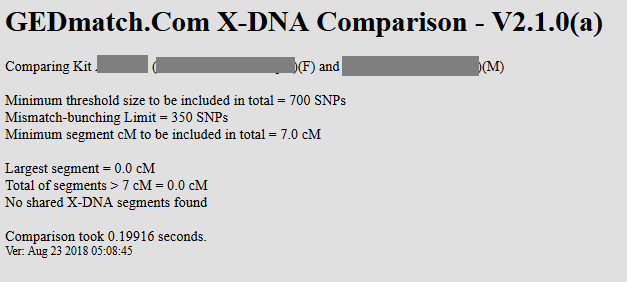
Read more in my post "What Does No Shared X DNA Found Mean?"
Is it possible to share no autosomal DNA and still share X DNA?
If you have ever bothered to look at the very end of your Gedmatch One-to-Many results, you might have noticed that there are some people with whom you share no autosomal DNA (from your numbered chromosomes), but you do share some X DNA with them. This is possible and even common!
For example, my dad has a DNA match with whom he shares about 56 cMs of autosomal DNA and 62.3 cMs of X DNA. When my dad passed his autosomal DNA down to me, I didn't get any of the 56 cMs that he shared with his match. Since he passed down his entire X chromosome to me, I did get the entire 62.3 cMs of X DNA. That's a pretty big X match, and we share no autosomal DNA whatsoever.
Conclusion
I hope that this post has helped you understand more about X DNA and your Gedmatch X One-to-One results. If you have any questions about something that you read in this post, or if you would like to share your own experience with X DNA, please join us in the discussion below.
Thanks for stopping by!
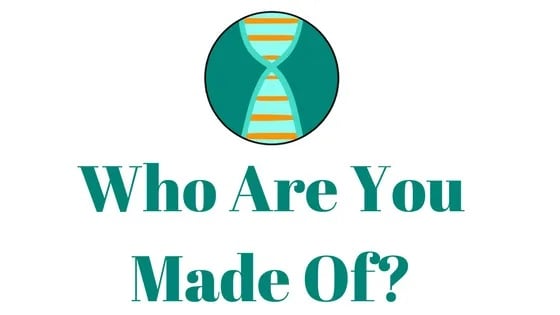
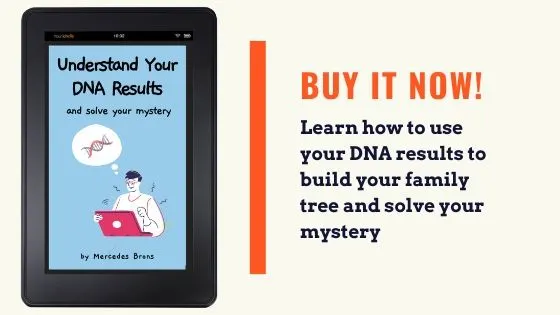
Cinderella
Friday 12th of April 2024
I share an entire x (Chr 23) with another female when doing "prevent page breaks." I assume that means we have the same father? We both uploaded our Ancestry DNA results to Gedmatch to prove what the Ancestry was telling us (that we were closely related, and by process of elimination, concluded we were half siblings). A shocking revelation at the age of 68. However, neither one of us could interpret our Gedmatch results. It did say 1.5 under the "Gen" column, and 2 under the "type" column, and there was a blue line completely under the Chr 23. Are our conclusions correct without a doubt? It does make sense now looking back at my life (and my twin's) about this revelation.
Noel
Saturday 27th of May 2023
On a Gedmatch one-to-one x comparison, can the results be shared on both male and female sides of the family. What I am asking is does this compare both male and female lineage? I have a distant cousin that I got a 7.5 cm comparison with. We have both male and female lines to compare. Does this test only work with the female lines?
Mercedes
Sunday 28th of May 2023
Hi Noel, Thank you so much for your excellent question. X-DNA inheritance works in a special pattern, with females inheriting X-DNA from both their mother and father, and males inheriting X-DNA from only their mother. This means that a female with an X-DNA match could expect the relationship to be on either side of their family, keeping in mind the way that X-DNA is passed down. For example, a female inherited X-DNA from both of their maternal grandparents, but did not inherit any X-DNA from their paternal grandfather. There are special X-DNA inheritance charts you can find online that show this inheritance pattern in a "fan pedigree style". Males only inherit DNA from their mother's side of the family, so a male can assume that any X-DNA match is from their maternal lines. With that said, a 7.5 X-DNA match is most likely a very, very distant relative, so it may not be possible to identify your shared ancestor. If you share autosomal DNA, this can provide more clues as to how you might be related. I hope that this helps! Mercedes
Melissa
Wednesday 28th of December 2022
Hello, My One-To-Many match tool came back with only ONE X-DNA match with total cM 8.6. I'm confused as to how only 1 out of so many matched X-DNA. Also, I am really having a hard time wrapping my head around how to identify which side of the family the match would be. I am female and the X match is male. Which side would he fall into?
Thank you!!
Kim
Sunday 10th of April 2022
My sister and I suspect that our mother was unfaithful with her husband's brother. Recent dna has shown a cousin to be a half sibling. Will Gedmatch be able to sort out the chromosomes between brothers?
Mercedes
Thursday 14th of April 2022
Hi Kim, Since males do not inherit an X chromosome from their father, the X-DNA tool will not be able to help identify the nature of a relationship between two potential brothers. You might find that the following post has information that can help, however. Best of luck to you! Sincerely, Mercedes
Alexander
Saturday 29th of August 2020
Hello Mercedes
Great read! I was wondering if you could tell me if there is any possible relation between my wife and I- with my Gedmatch results? Our Ancestry results showed we have Scottish/Irish English and Wales in common. With distance relatives from the same/near town in Scotland. --------------------------------------------------------------------------------(Using Autosomal Segment threshold size will be adjusted dynamically between 200 and 400 SNPs. Minimum segment cM to be included in total = 3.0 cM).
Largest segment = 4.1 cM
Total Half-Match segments (HIR) = 21.3 cM (0.593 Pct)
6 shared segments found for this comparison.
522221 SNPs used for this comparison.
52.520 Pct SNPs are full identical.
Thank you for the time you took to explain X DNA!!